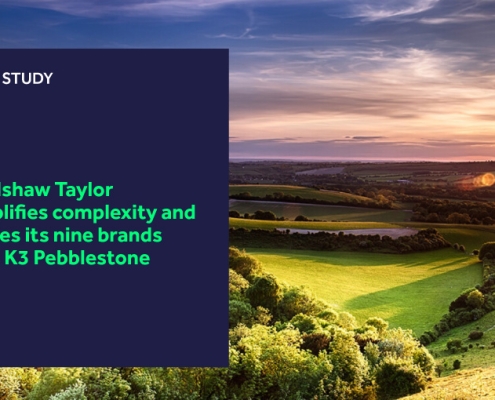Choosing the right ERP system is one of the most important decisions a fashion retailer can make. With the need to manage complex inventory, supply chains, and omnichannel sales, fashion brands require a solution tailored to their industry.
SAP is a well-known ERP provider with broad industry coverage, while the combination of K3 and Microsoft Dynamics 365 is a fashion-first ERP solution designed specifically for all fashion brands.
In this comparison, we break down the key differences between K3 + Dynamics 365 and SAP for fashion brands.
1. Fashion-specific functionality
SAP offers a powerful ERP solution but is designed for multiple industries, meaning extensive customisation can be required for fashion brands. It does offer good support for retail.
For fashion specifically, however, K3 enhances and extends Microsoft’s leading D365 ERPs with built-in fashion specific features, including:
- Size, colour, and fit matrix management
- Seasonal collection planning
- Inventory and warehouse management
- Order management
- PLM and PDM
Verdict: K3 + Microsoft Dynamics 365 is purpose-built for fashion, while SAP requires additional customisation to meet specific fashion industry needs.
2. Ease of implementation & integration
SAP implementations can be complex, time-consuming, and costly.
K3 is natively embedded within Microsoft Dynamics 365, meaning:
- No additional integration is required
- Implementation is faster and more cost-effective
- It works seamlessly within the Microsoft ecosystem (Power BI, Azure, etc.)
Verdict: K3 + Dynamics 365 offers a smoother implementation process for fashion specifically, while SAP can sometimes work better for non-fashion needs.
3. Scalability & flexibility
SAP is known for serving large enterprises with complex global operations. However, its rigid structure can be challenging for fast-growing fashion businesses.
K3 + Dynamics 365 is built to scale with:
- Cloud-based deployment for easy expansion
- Flexible workflows tailored to fashion operations
- Real-time reporting
Verdict: SAP is suitable for large enterprises with dedicated IT teams, while K3 + Dynamics 365 offers scalability without the complexity. K3 also offers an enterprise solution and SMB solution, meaning it can provide whatever your business needs.
4. Omnichannel & eCommerce Readiness
With fashion consumers shopping across multiple channels, ERP systems must support seamless omnichannel retail. K3 enables better channel management with:
- The ability to systemically split stock across each business channel
- Ringfence products for key customers and markets
- Seamless integration with platforms like Magento
SAP supports omnichannel capabilities, but additional customisation and third-party integrations can be required in some instances.
Verdict: K3 + Dynamics 365 is built to support better inventory and stock management, while SAP may need some additional work to support these features.
5. Total Cost of Ownership (TCO)
ERP solutions are a significant investment, and hidden costs can add up over time. SAP does handle its own implementations while K3 and Microsoft rely on the D365 partner network. However, since K3 is embedded within D365, businesses benefit from:
- Predictable cloud-based pricing
- Lower maintenance costs
- Faster ROI due to industry-specific functionality
Verdict: SAP can be expensive and complex to maintain, whereas K3 + Dynamics 365 is a cost-effective and efficient solution that is supported by subject matter experts.
Which ERP is best for fashion brands?
If your business requires a normal ERP and has the resources to manage a large-scale implementation, SAP might be a viable option.
However, if you want a fashion-specific solution that’s ready to use out of the box, seamlessly embedded, and scalable, K3 + Microsoft Dynamics 365 is the clear winner.
Looking to take the next step in your fashion tech journey? Get in touch below to see how we can help 👇
 https://k3fashionsolutions.com/wp-content/uploads/2025/05/konges-case-study-featured.jpg
510
900
Jordan Heal
https://k3fashionsolutions.com/wp-content/uploads/2024/12/K3_Fashion_Solutions_Half-color_RGB.svg
Jordan Heal2025-05-07 10:05:062025-06-09 11:45:34Elbek & Vejrup sets Konges Sløjd up for further growth with D365 BC and K3 Pebblestone
https://k3fashionsolutions.com/wp-content/uploads/2025/05/konges-case-study-featured.jpg
510
900
Jordan Heal
https://k3fashionsolutions.com/wp-content/uploads/2024/12/K3_Fashion_Solutions_Half-color_RGB.svg
Jordan Heal2025-05-07 10:05:062025-06-09 11:45:34Elbek & Vejrup sets Konges Sløjd up for further growth with D365 BC and K3 Pebblestone


